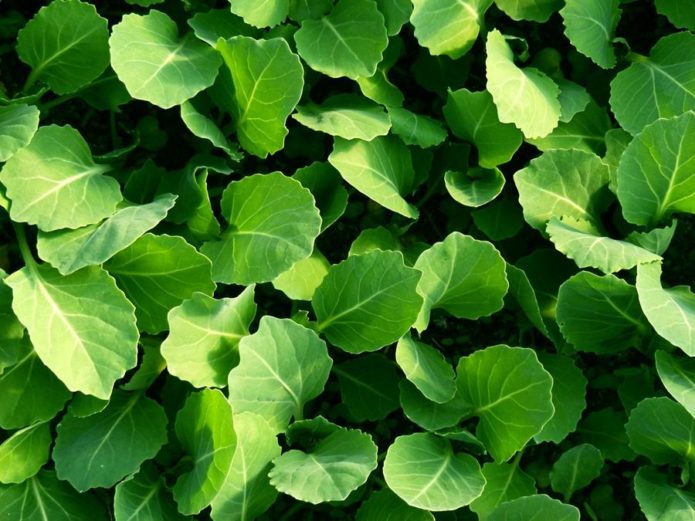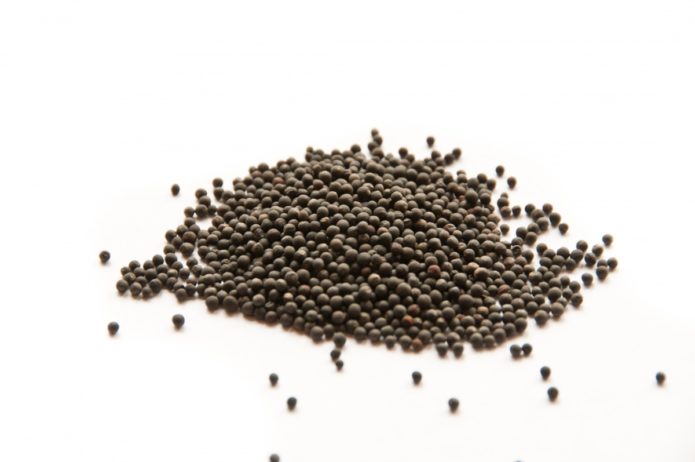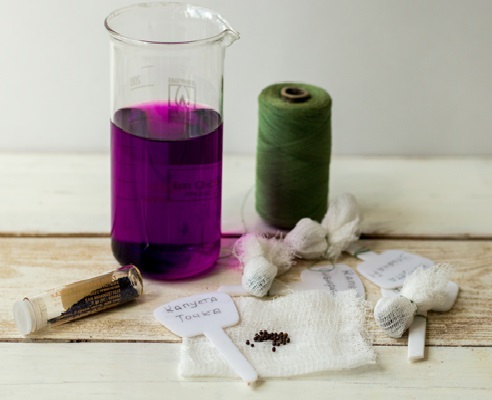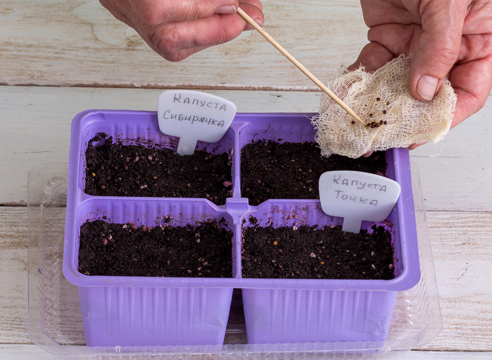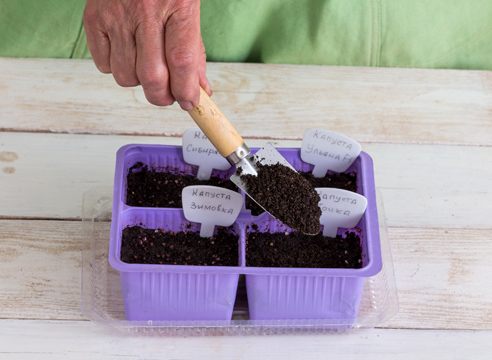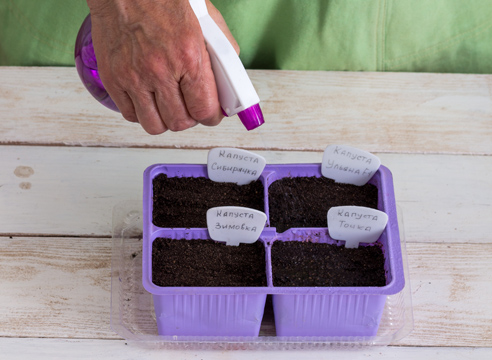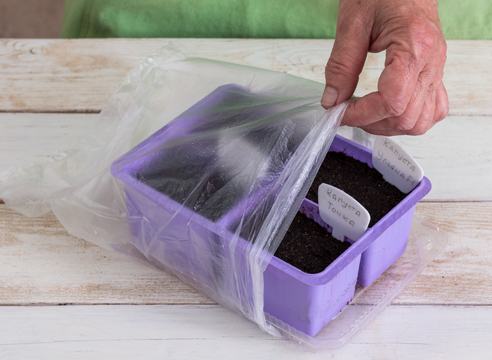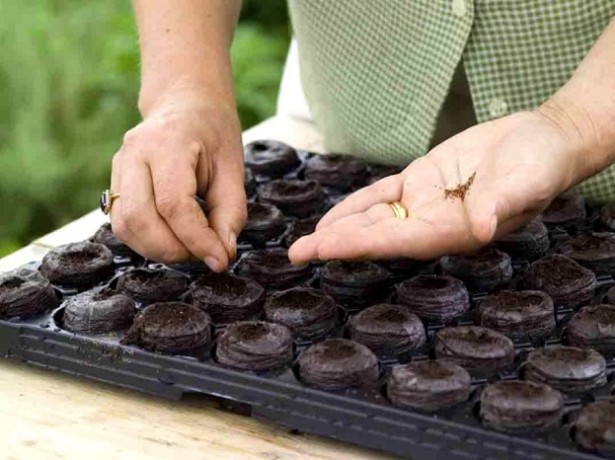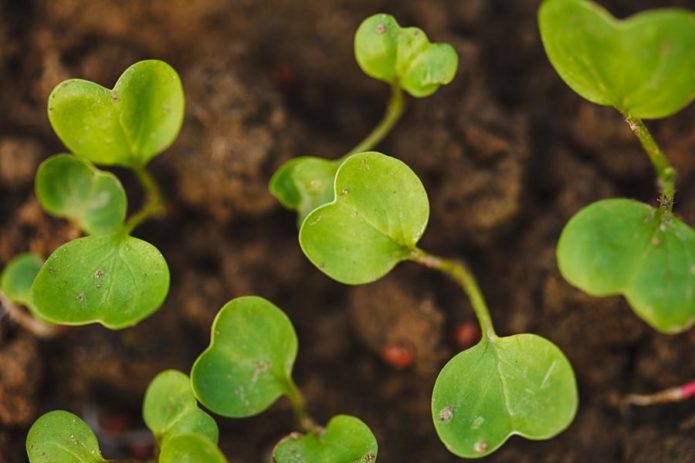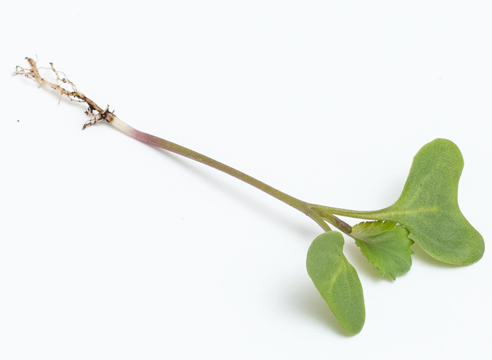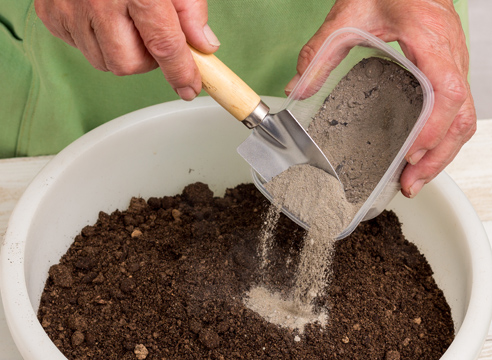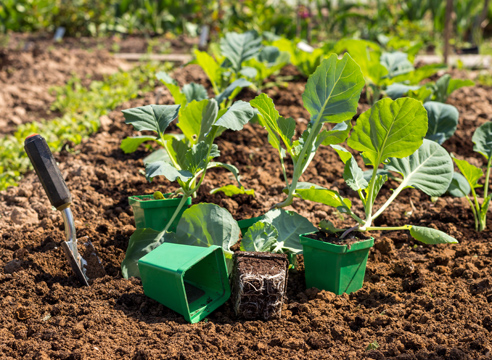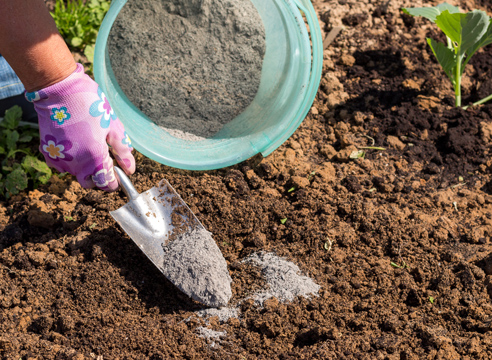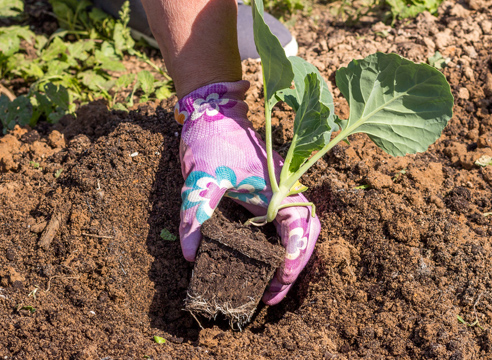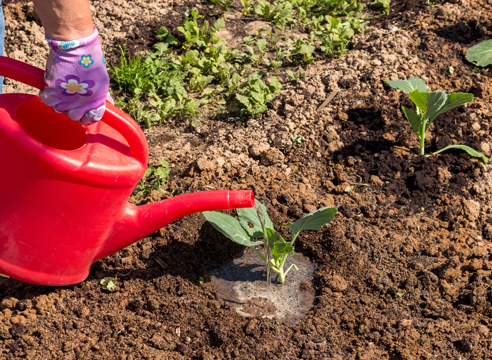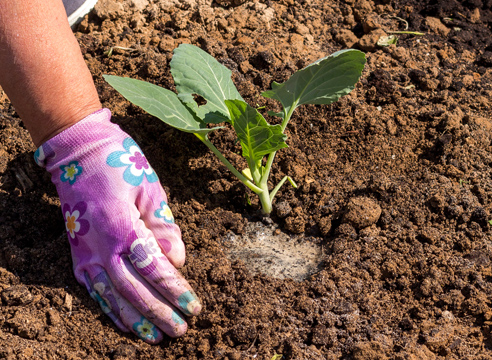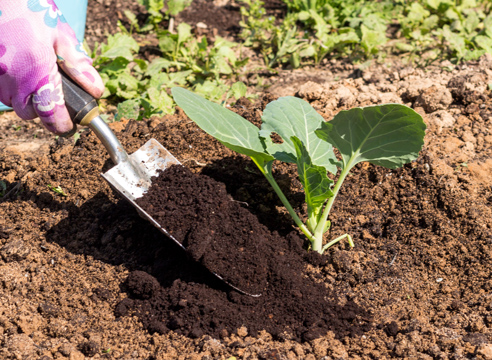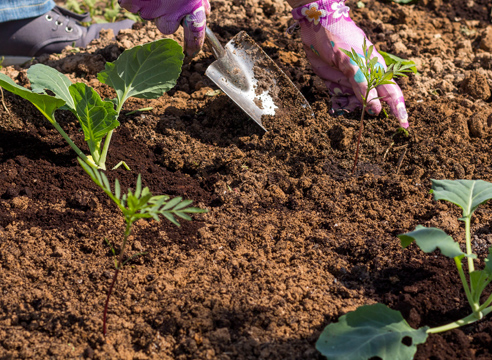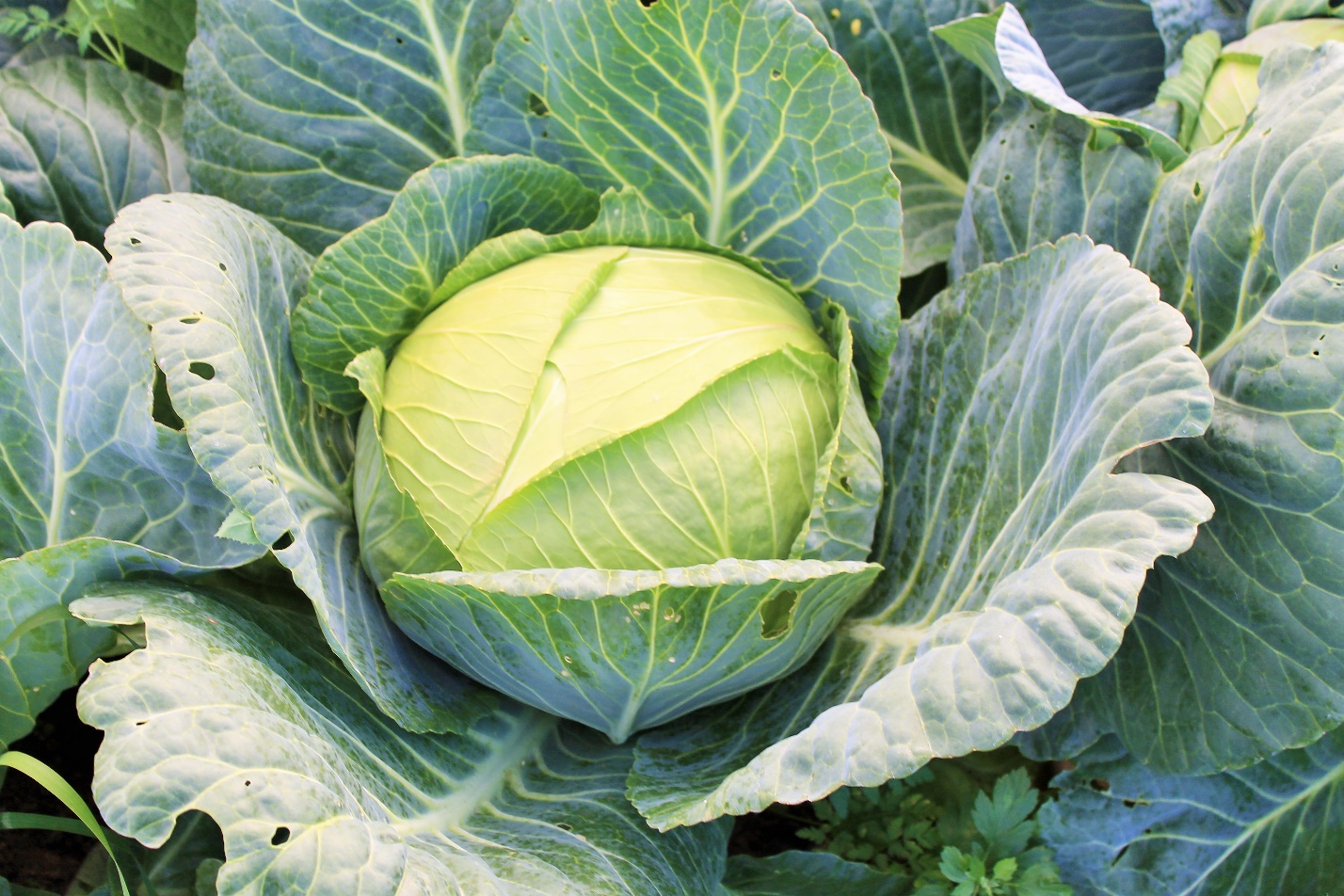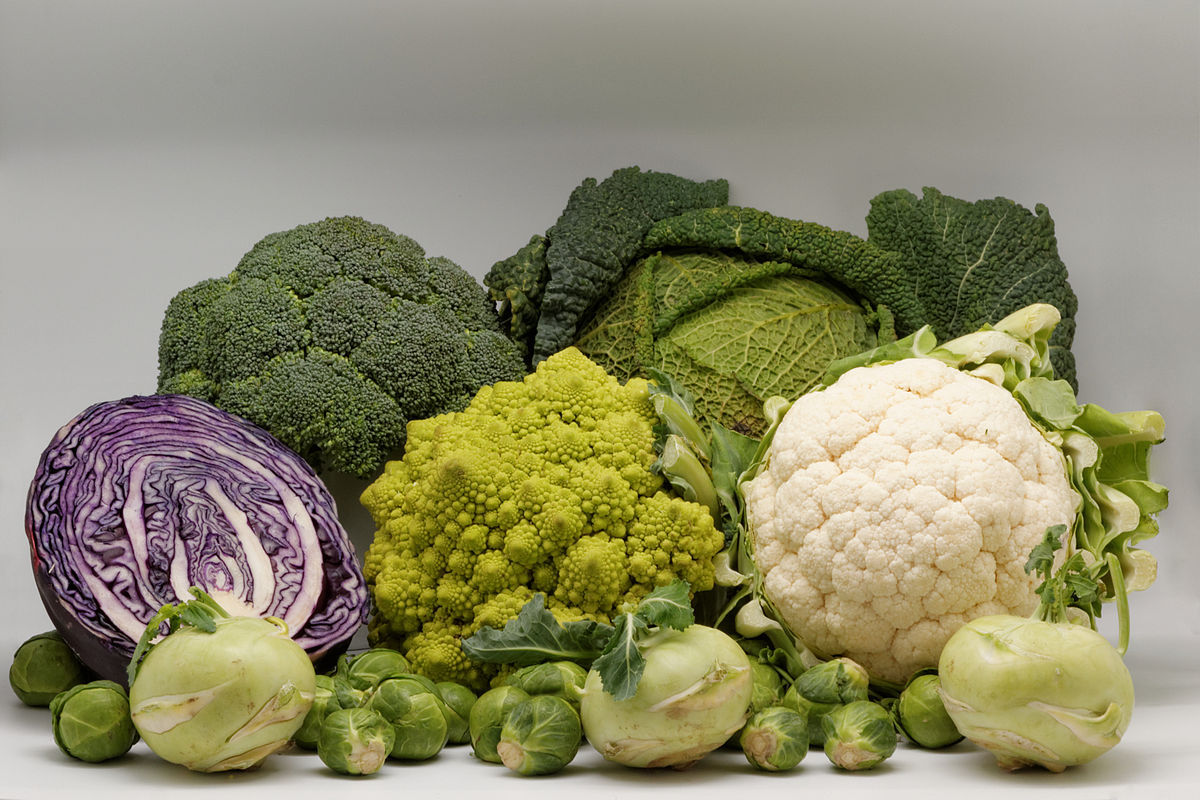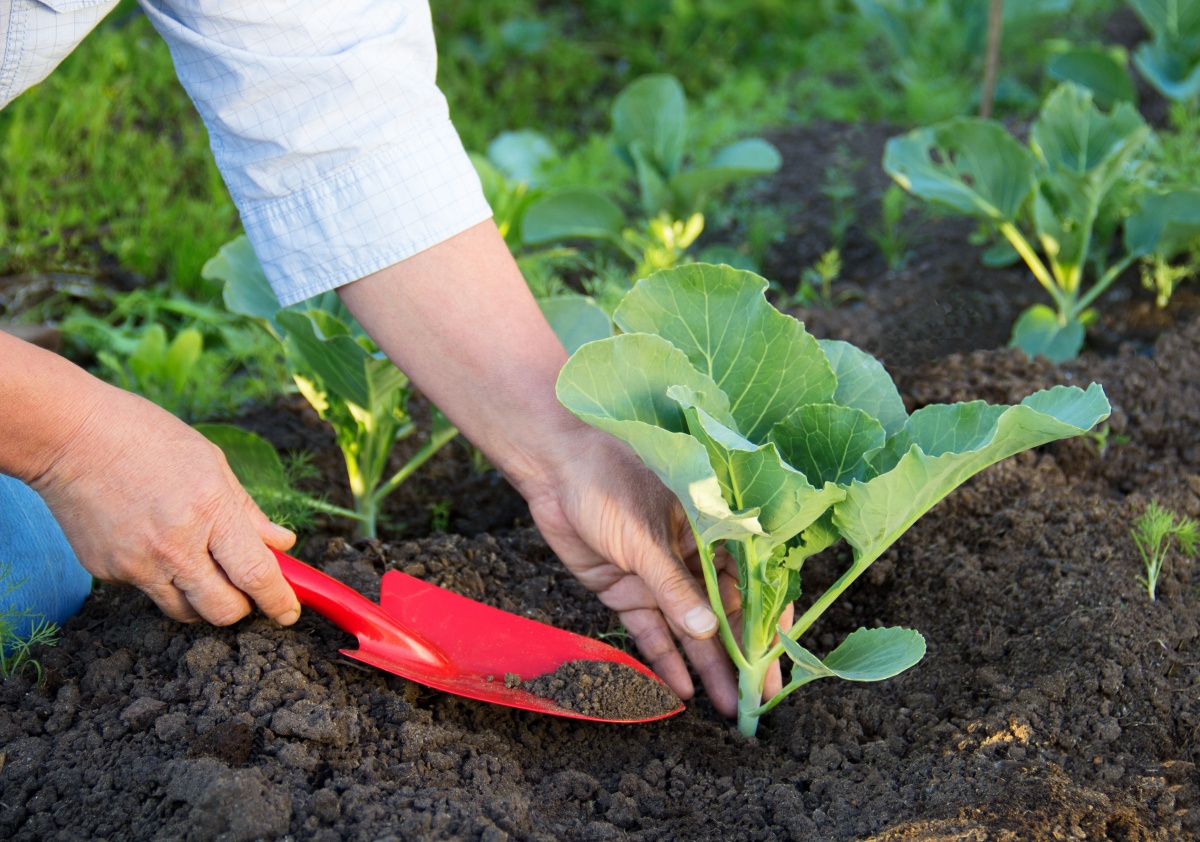Everyone who has been cultivating horticultural crops for a long time on their site knows that a good result depends on the use of high-quality planting material. This also applies to cabbage - one of the most demanded vegetables in our dachas and vegetable gardens. Of course, cabbage seedlings can be easily purchased in specialized stores in any assortment. But experienced gardeners do not always trust the novelties of agricultural technology, knowing about the difficulties in growing seedlings. If you want to be confident in the quality of the planting material, then you need to know how to properly grow cabbage seedlings, which will yield a harvest of strong, healthy plants.
Content
The first thing to know: basic rules for planting seedlings at home
As in any other business, certain rules should be taken into account in growing seedlings. Young sprouts of cabbage may not even sprout if you are not careful about the quality of the seeds and the composition of the soil, or if you do not sow on time. The choice of planting method can also be important. Let's consider these criteria in more detail.
Dates of sowing seeds for seedlings
Experienced gardeners argue that the choice of the optimal sowing time for cabbage seeds for seedlings directly depends on the correct selection of the variety. This way, you can feast on ripe fresh cabbage starting in June all summer long.
Cabbage varieties are classified according to the ripening period.
- Early maturing varieties have a growing period of 100 to 120 days from the day of sowing. For seedlings, seeds of early ripe cabbage are sown in the middle of March. Due to the looseness of the head of cabbage and the softness of the leaves, cabbage of these varieties is not intended for long-term storage and winter harvesting, it is consumed fresh. Popular varieties - Early ripening, Golden Hectar, June, Transfer F1.
- Mid-season varieties - ripening period is 130–150 days. Sowing is preferably done towards the end of April. Cabbage of these varieties is well suited both for fresh consumption and for pickles. Popular varieties - Nadezhda, Slava, Menza F1.
- In late-ripening varieties, the growing season lasts 160-180 days. Sowing of seeds is carried out in early April. It is very well stored for a long time under certain conditions, well suited for salting, fermentation, pickling. Popular varieties - Türkiz, Amager, Aros F1.
- Ultra-early ripening cabbage varieties are distinguished by a very fast growing season of 40-50 days. The recommended time for sowing seeds for seedlings is the end of March. Such cabbage is not suitable for long storage, but it is very good fresh. Popular ultra-early ripening varieties are Strawberry Shortcake and Express F1.
A little tip: you can calculate the optimal time for sowing seeds for seedlings according to the following principle. 10 days pass between the sowing time and the emergence of seedlings; the grown seedlings should be planted in the ground in another 50–55 days. That is, sow cabbage for seedlings 60–65 days before you plan to plant it in the garden.
Video: growing cabbage seedlings of different varieties by the seasons
How to prepare the ground
Cabbage seedlings are very capricious and demanding on the soil. For good growth, it requires a soil with a high nutritional value and neutral acidity. The easiest way to buy ready-made potting soil is from specialty hardware stores, but you can make it yourself. To do this, take the following ingredients in specific proportions:
- 75% peat;
- 20% sod land;
- 5% sand;
- 10 tbsp. l. ash for every 10 kg of mixture.
Mix all ingredients well until smooth, so that the soil is loose, soft and breathable.
Please note that it is categorically not recommended to take land from the garden for seedlings. Especially if cruciferous crops grew in this soil earlier: infections, which probably remained after them, are destructive for cabbage.
If you do not have the opportunity to use soil not from the garden for the soil mixture, steaming will help you. Sift the mixture thoroughly and place in a double boiler for 1 hour. Then add a little perlite: it has a good effect on the looseness of the soil, increases its air permeability, absorbs excess moisture during watering and gradually gives it to the seedlings.
Instead of steaming the soil mixture, you can spill it with a fungicide solution or a weak solution of potassium permanganate.
Video: soil preparation rules for seedlings
How to prepare seeds for planting
You probably know that the future harvest directly depends on high-quality sowing material. Therefore, purchase seeds for seedlings only from trusted sellers.
But even when buying material from a reliable manufacturer, you should not rely on chance. Seeds require pre-treatment before sowing.
Start by sorting out the seeds and rejecting any that look too small or unhealthy. After that, fill the good material with 3% saline (take 15 grams of salt for 0.5 liters of water). Wait 5 minutes and remove the seeds that float to the surface. They can be thrown away as they are not viable. Gently but thoroughly rinse the rest of the material under a weak stream of water and place on a paper towel to dry.
Please note that the water should not be too cold or warm. Room temperature is the best option.
The next step is to disinfect the seeds. There are 2 common ways this procedure can be performed.
- Place the seeds in a mild potassium permanganate solution and let sit for 30 minutes. After that, rinse and dry them again.
- Heat treatment. Fold the seeds in a calico bag or cheesecloth folded in several layers. Dip in a glass of water at 47-50 ° C, leave for 20 minutes. Please note that if the water is hot, the seeds will lose their germination, in other words, they will cook; at a lower temperature, the heat treatment effect will not be achieved.
Recently, many seed producers themselves carry out all the necessary processing of the seed and indicate this on the packaging. In this case, heat treatment will be sufficient, which will increase the resistance of the seedlings to diseases.
Experts recommend treating seeds with Fitosporin or Maxim according to the instructions on the package.This is done as a preventive measure to avoid damage to the seedlings by mold and fungal diseases.
Planting methods for seedlings
After the soil is prepared and the seeds are processed, you can start sowing. This procedure also has its own rules.
There are several ways to plant seeds. For example, in a box with dimensions 20 X 30 X 7 cm. Fill it with soil mixture, in it make grooves about 7 mm deep at a distance of 3 cm from each other. Sow seeds in the furrows, level the soil surface and cover the box with foil.
You can also plant your seeds in a convenient grower. This is done as follows:
- Fill the containers with soil. Spread the dried cabbage seeds on the surface of the soil one by one at a distance of 1 X 1 cm from each other so that the seedlings do not thicken. You can install labels with the names of varieties.
- Seeds need to be covered with a layer of soil mixture 1–1.5 cm thick. If the layer is thinner, the seeds can sprout directly in the shells, and this will interfere with the development of seedlings.
- Thoroughly moisten the top with a spray bottle.
- Wrap the container in polyethylene to ensure the greenhouse effect, and place in a bright place at a temperature of +20 ° C.
In both of these cases, after a certain time, it will be necessary to dive the seedlings. You can do without this if you plant 1-2 seeds. in peat cups or special cassettes for seedlings, which can be bought in specialized stores.
Conditions for growth
Cabbage needs a lot of light for good growth and development. Ideally, daylight hours should be 12-15 hours. Early spring is not rich in the sun, so you will have to provide additional lighting. This can be done by installing a fluorescent lamp above the seed boxes. Otherwise, due to lack of lighting, the seedlings will stretch out and weaken.
The right temperature is also an important criterion. Until the seedlings hatch, provide the crops with 18–20 ° C. As soon as the sprouts appear above the soil, transfer them to a cooler place, where the daytime temperature is around 15 ° C and the night temperature is 7-10 ° C. Such temperature drops will temper the plants and protect them from stretching. But this only applies to seedlings of white cabbage.
For good growth, cabbage needs fertilizer. The first feeding is done a few days after the pick. If you are unable to use a special fertilizer, prepare it yourself. For this you will need:
- 1 liter of water;
- 4 g superphosphate;
- 2 g ammonium nitrate;
- 2 g of potassium fertilizer.
The second feeding is carried out after 2 weeks, and 2 times more potash fertilizers are taken for 1 liter of water. Feed the seedlings for the third time 2-3 days before planting them in the ground. In this case, increase the amount of potash fertilizers to 8 g.
Remember! Top dressing is carried out only after watering. Otherwise, the roots will be burnt.
Watering seedlings
The very first watering is carried out before sowing seeds into the soil. The soil needs to be shed properly because the seeds need a lot of water to germinate well. After that, the box with crops, covered with polyethylene, is not touched until the very appearance of the first shoots. Leaving the seeds for this period without watering, you will save them from diseases such as black leg.
As soon as you see the first shoots, pay attention to the condition of the soil in which they are located. If the soil is wet, it will be better to wait until it dries.Excess and lack of moisture are equally harmful to seedlings: the former leads to rotting of the roots and increases the risk of mold and fungal diseases; the second strongly inhibits the growth of seedlings.
If the soil moisture is moderate, you can water the first after germination. Use only settled water at room temperature. Water the seedlings with small amounts of moisture to moisten the soil well, but not flood it.
Seedling picking
The seeds sprouted, you cared for them properly, and after a while, 2-3 true leaves appeared on each seedling. It's time to dive seedlings.
First of all, make a soil mixture from the following components:
- 2 parts of peat;
- 2 parts of sod land;
- 1 part of humus;
- 0.5 parts of sand.
Mix all ingredients and add 1 cup to 5 liters of wood ash. Stir again.
- Take pots that are the right size for the number of seedlings. Fill each of them 2/3 with soil mixture, lightly compact. Make holes of the required depth: the roots should fit freely and not bend. Roots that are too elongated can be pinched a third of the length. Scatter soil around the seedling and compact slightly.
- The cut seedlings need to be watered. Do this gently from the edge of the pot. It is better to use a small watering can for this. When all the water has been absorbed, add the soil so that it reaches the cotyledon leaves.
When you are done diving, place the seedlings in a well-lit place with a temperature of 15-17 ° C.
Prevention and treatment of diseases of cabbage seedlings
Improper watering or non-compliance with the temperature regime can lead to disease damage to seedlings. Any, even the slightest signs of damage should be a signal for action to save the seedlings.
| Disease | Features: | Signs of defeat | Treatment and prevention methods |
| Keela | Most often, plants are infected in too moist soil at the stage of growing seedlings. | Plants wither slightly at first, and growths and swellings are recorded on the root system. | A diseased plant must be dug up and destroyed. The soil is disinfected with Bordeaux liquid or formalin. The next landing should be carried out no earlier than 5 years. |
| Fusarium | Seedlings are most often affected. | Seedling material completely withers or dies. Mature plants reduce the yield and quality of the heads of cabbage. | Soil treatment with 1% Bordeaux liquid solution. Processing with hot pepper infusion. Compliance with the rules of agricultural technology and the cultivation of disease-resistant hybrids or varieties. |
| Blackleg | Seedlings in greenhouses are more susceptible to damage when crops are thickened and there is no sufficient lighting. | Darkening of the stalk near the root collar, followed by thinning, which causes curvature and lodging of the stems. | Steam treatment, seed and soil treatment with fungicides, elimination of waterlogging, adherence to agricultural practices. |
| White and gray rot | A side effect of insufficient potassium or phosphorus supplementation, as well as neglect of storage conditions. | The appearance of weeping, slimy-type spots with a characteristic bloom on the leaf plate. | Compliance with crop rotation and agricultural technology. Processing storage facilities before laying vegetable products. |
Planting seedlings in open ground
When 5-6 true leaves, strong and well-developed, appear on the sprouts of cabbage, you can start transplanting from cups into the ground.
Plant strong, seasoned seedlings in warm weather.It's okay if frosts in the morning are still possible: cabbage seedlings can withstand temperatures down to -3 ... -5 ° C well. If the cold persists in the daytime, postpone the transplant. Due to prolonged exposure to low temperatures, some early varieties are shooted.
When planting cabbage, choose an area that has previously grown legumes, potatoes, garlic, carrots and onions. Cruciferous plants, for example, arugula, radish, radish, etc., are bad predecessors; cabbage cannot be planted in their place.
Try to change the plots for the beds: it is recommended to plant cabbage in the old place no earlier than after 3-4 years.
Seedlings should be shed well at least 2 hours before planting. It is even better if you hold it for about half an hour in a pan with water, adding Epin (1 ml of the product to 2 liters of water).
- Leave the seedlings to soak in moisture, and in the meantime, prepare the holes in the garden bed.
- Add top dressing to each hole: 1 glass of wood ash, 1 tbsp. l. double superphosphate, 1 tsp. urea or any nitrogen fertilizer. Dig so that the dressing mixes well.
- Make indentations. Their depth should be such that the bushes fit up to the first true leaf. Place seedlings in them without breaking the earthy coma.
- Fill the hole to the brim with water. It is more convenient to do this with a garden watering can, so as not to damage the roots. Remember that the water should not be cold, let it sit in the sun.
- Wait until the water is half absorbed, then fill the hole with soil to the top. Do not seal.
- Now you need to mulch each seedling bush. This will keep moisture in the soil for a long time and prevent soil crust formation.
- To protect the cabbage patch from pests, especially the cabbage white, plant marigolds between the rows of seedlings.
Video: growing cabbage seedlings according to the rules
In order for cabbage seedlings to grow strong and healthy, and after a while please you with a good harvest, you have to work hard. But now you know all the secrets that will help you in this matter. The main thing is attention, accuracy and care, and everything else will follow. We hope our tips will help you to avoid any mistakes in the future when growing cabbage seedlings. Maybe you want to share with us your experience and advice on the topic discussed? Please leave your comments, ask questions. Good luck and good harvest!
